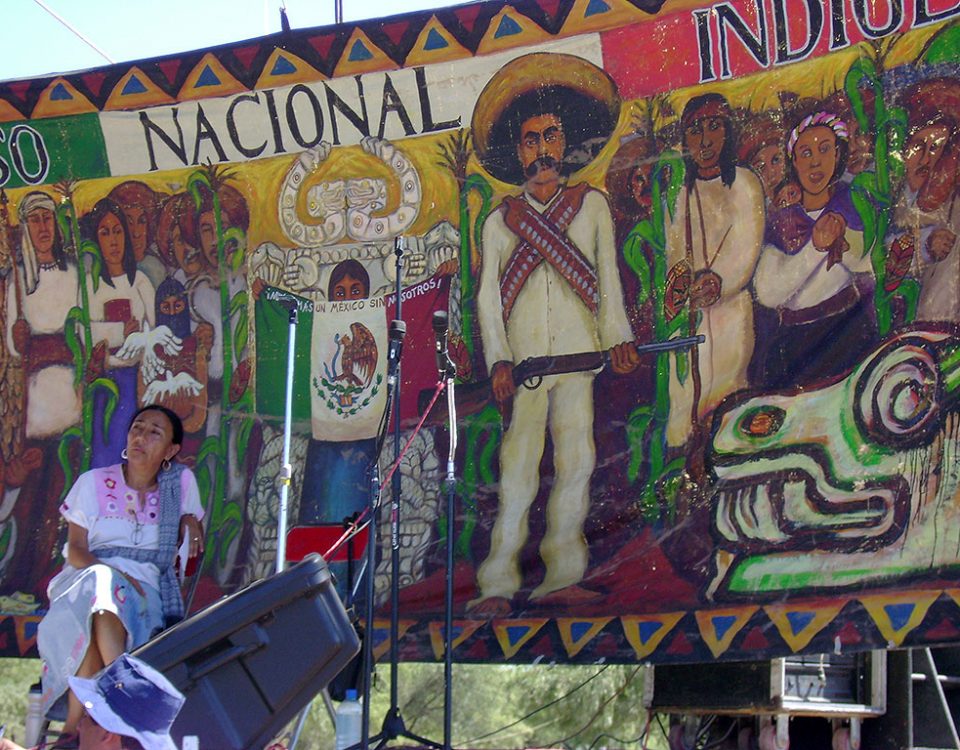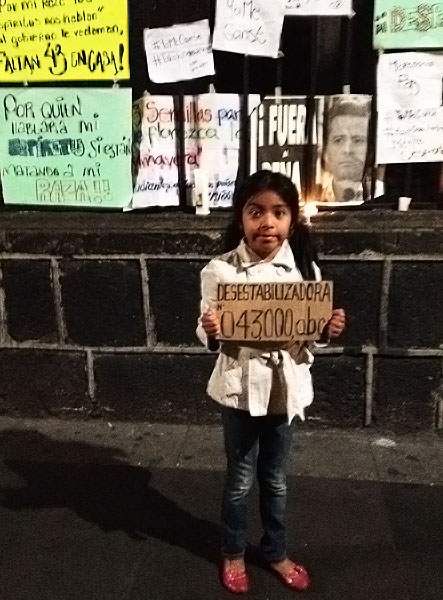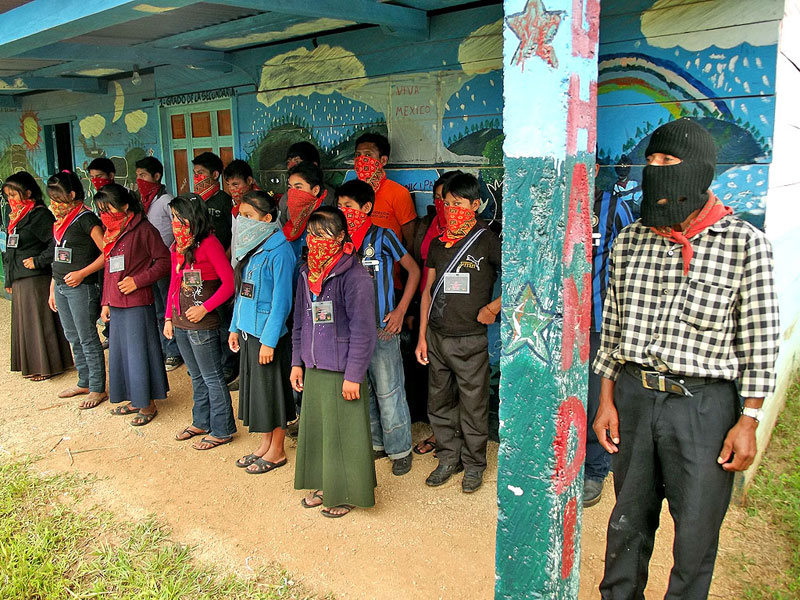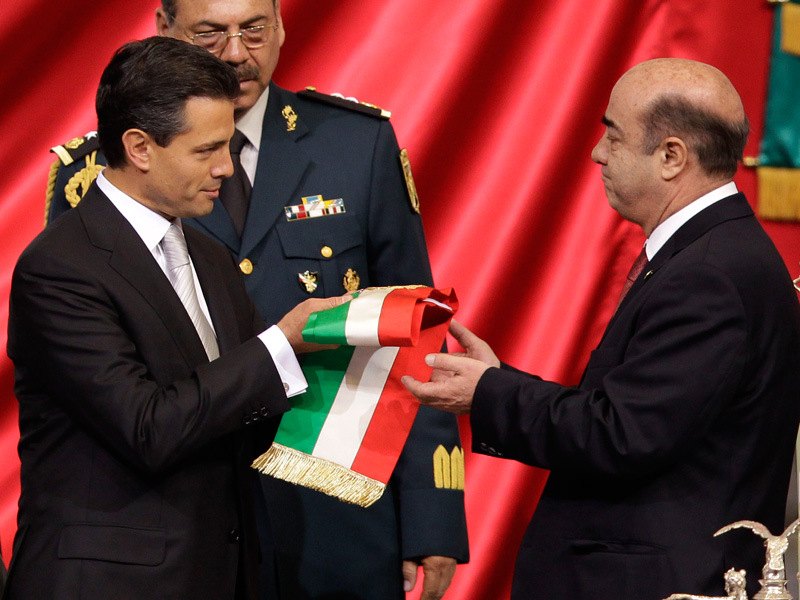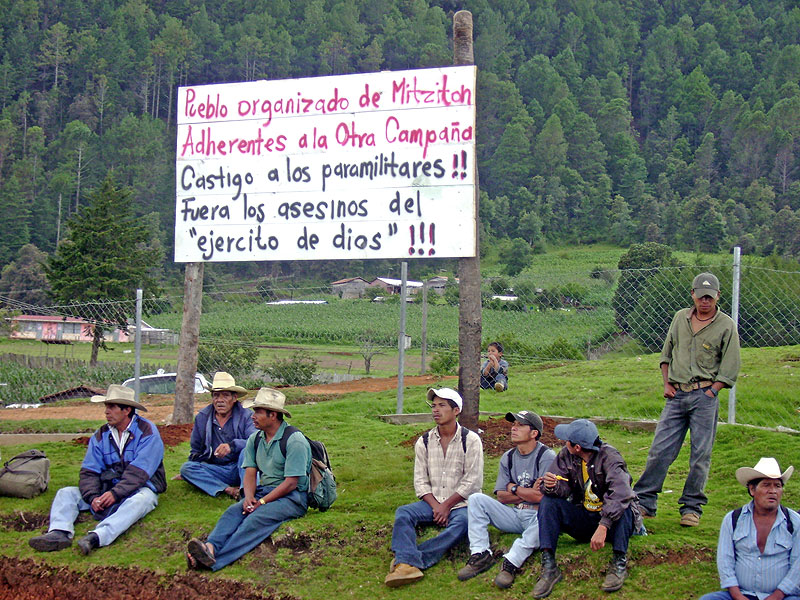
ANALYSIS: A Serious deterioration of the human rights situation in Chiapas and Mexico
30/11/20092009
29/01/2010In 2009, Mexico came to occupy center-stage in international news due to the violence associated with organized crime as well as the H1N1 influenza epidemic. Internally, however, media coverage on these issues could not ignore the worsening of poverty-rates in the country or the number of complaints directed at the military presence in the streets.
 It is noteworthy that so many Mexicans have come to doubt the very existence of the virus H1N1 due in large part to the lack of trust in dominant social institutions. This distancing of the Mexican populace from its representatives could be seen in various phenomena, especially those related to voting. On 5 July, elections for over 1,500 public offices took place. Abstention rates reached 55.19%, with “blank-votes” reaching 5.4%. The blank-vote movement had generated a significant following in the run-up to the elections. Taking into account the low participation rate, the election results brought about changes compared with the previous decade: following 12 years of having lost control of the House of Deputies, the Institutional Revolutionary Party (PRI, the party that had held power for more than 70 years until 2000) carried the day. Of a total of 500 deputy posts, the PRI won 237.
It is noteworthy that so many Mexicans have come to doubt the very existence of the virus H1N1 due in large part to the lack of trust in dominant social institutions. This distancing of the Mexican populace from its representatives could be seen in various phenomena, especially those related to voting. On 5 July, elections for over 1,500 public offices took place. Abstention rates reached 55.19%, with “blank-votes” reaching 5.4%. The blank-vote movement had generated a significant following in the run-up to the elections. Taking into account the low participation rate, the election results brought about changes compared with the previous decade: following 12 years of having lost control of the House of Deputies, the Institutional Revolutionary Party (PRI, the party that had held power for more than 70 years until 2000) carried the day. Of a total of 500 deputy posts, the PRI won 237.
Chiapas, for its part, remained during this time far from a focus of concern for the national and international media. In June, the First American Meeting Against Impunity took place in the Zapatista caracol in Morelia. Impunity was there repeatedly denounced as a reality both past and present in Latin America.
In Chiapas, the most controversial—indeed, paradigmatic—event took place between August and November, when the Supreme Court of Justice of the Nation(SCJN) mandated the release of 35 indigenous individuals who had been incarcerated for having participated in the murder of 45 indigenous members of the community of Acteal, a municipality of Chenalhó in the Highlands region of Chiapas, in 1997. The SCJN argued in its finding that the previous sentence had been based on evidence that had been obtained illegally and on testimony fabricated by the PGR. Importantly, however, the SCJN did not determine the imprisoned to have been innocent of these crimes. For this reason, several observers noted the gap that could readily be seen between legitimate judicial findings and demands for justice. The resolution was also criticized for not having taken into account either the context in which the Acteal massacre occurred or the ongoing war in Chiapas.
In confirmation of the claims that several human-rights had been making for more than a decade, a number of recently declassified U.S.-government documents from the National Security Archive were made public. They detail the direct support given to paramilitary groups by the Mexican military in their counter-insurgency efforts against Zapatista support-bases in the 1990s. Furthermore, the office of the Attorney General for State Justice announced in late October that it had in its possession evidence that implicated several high-ranking officials at both the state and federal levels for their omissions and negligence in the case of Acteal.
Another worrying aspect of the SCJN ruling is the impact it had in Chenalhó and various other regions in Chiapas, where the finding was widely seen as a confirmation of impunity that could perhaps allow for the return of paramilitary violence. Demonstrating political realism, the government of Chiapas sought to prevent the formerly incarcerated from returning to Chenalhó so as to avoid conflict; it instead granted them land, housing, and work elsewhere.
Although little mention was made by relevant institutions regarding the ongoing armed conflict, several instances of military incursion and searches of communities (Zapatista and non-Zapatista alike) were seen in the Central zone (around Venustiano Carranza), in the Jungle Border region, as well as in the Highland zonethe HIghlands.
Beyond this, the harassment of Zapatista communities as carried out by indigenous and campesino groups associated with local power-groups or the government continued. The aggression directed at such communities, it seems, seeks to wear down the resistance by means of acts of violence of both greater and lesser degrees designed to provoke counter-violence: occupation of “recovered lands,” theft or destruction of harvests, etc. While the names and acronyms of the groups involved constantly change, the strategy of dividing indigenous groups within themselves has gone entirely unchanged.
In more general terms, a large majority of the social conflicts seen in 2009 had to do with questions of land and territory: resistance to mineral exploitation in 8 municipalities or the construction of the San Cristóbal-Palenque highway (as seen in Mitzitón, for example), the struggle for autonomous administration of the Agua Azul waterfalls (Bachajón), against high electricity prices, among others. Several of these organizational processes are related to the Other Campaign established by the EZLN at the close of 2005.
Perhaps of most concern is the ongoing criminalization of organizations unrelated to the state government that engage in social protest, including independent organizations, human-rights defenders, and the local Catholic church, in a process reminiscent of that of the 1990s.
In November, the newspaper La Jornada made public parts of the Attorney General of State Justice’s report, “Prevailing situation in the municipality of Venustiano Carranza,” which attempts to document the existence of a “subversive network” that was said to be planning destabilizing acts for 2010. The network was claimed to be headed by the Catholic priest of Venustiano Carranza, Jesús Landín. This report seems to justify both the harassment denounced by the Fray Bartolomé Center for Human Rights, the diocese, and other social actors, as well as the activities of police and military units in Venustiano Carranza and other nearby municipalities.
At the end of the year, the government seemed to change its strategy in light of rumors of potential social turmoil in 2010. At the close of November, representatives of the Chiapas Congress attempted to approve an initiative that would grant legal recognition to the Good-Government Councils (JBGs). According to legislators, it was the Zapatistas who asked that the JBGs be recognized.” The next day, the JBGs announced this claim to be a lie.. On 29 December, the local Congress approved a “Law on Indigenous Rights for the State of Chiapas,” a bill sent by the State Executive with the putative intent to “recognize the San Andrés Accords”. Analysts and organizations challenged the discursive character of the bill, which was said to recognize indigenous rights “only when these do not contradict the precepts of the state and federal constitution or the rights of others.”
For the first time in 16 years, the EZLN did not publicly celebrate the anniversary of its armed uprising of 1 January 1994. The Zapatista caracoles were closed on this first day of 2010, generating speculation and rumors with regard to the Zapatistas’ plans for the symbolic year of 2010, which marks the bicentennial of Mexican independence and the centennial of the Mexican Revolution.

